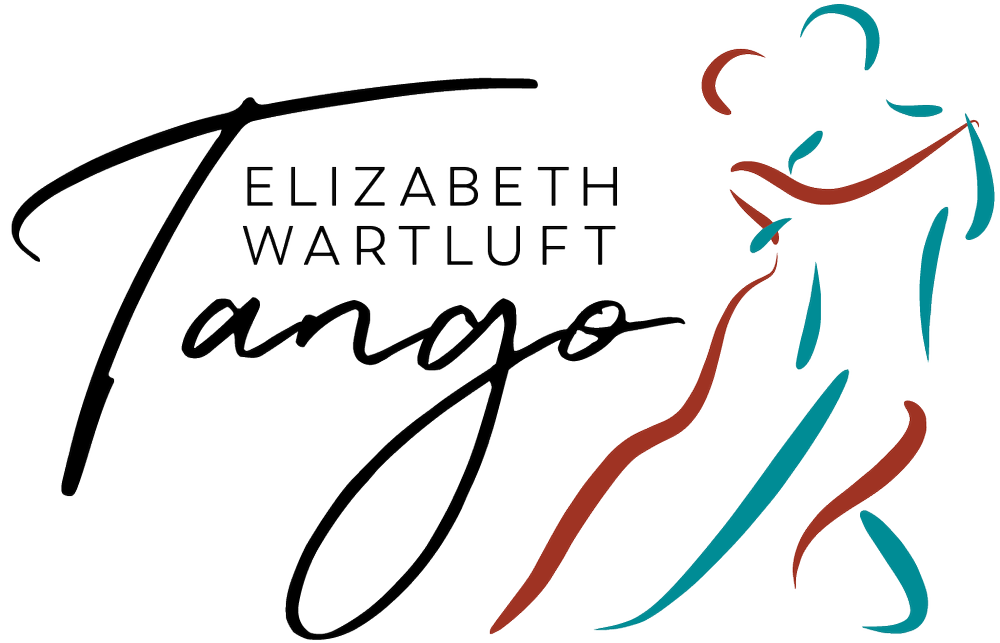Some thoughts on walking, stopping and balance
I have started running again (finally!) now that my ankle ligament tear is well-healed, and that gives me time to think about how tango is different from normal walking and running. When you run or walk, you have the expectation that forward motion will continue, so if you are slightly off-balance, you can continue on your way. In a way, running is both a controlled fall and a maintenance of axis and balance.
In tango, the expectation is that you will have to change direction often, and so being all the way on axis ALL THE TIME is part of the walk. Your direction is determined by the movement of other people. Perhaps there will be couples in your way, a missed communication from your partner, or other unexpected obstacles to moving forward. Being slightly off-balance has more consequences, so the emphasis on balance and axis are super-important.
That is not to say it is easy to always be aware of your axis and control your balance. The body is a complex system, so stabilization and balance have many moving parts. However, if you focus on a few key points, you will improve your ability to remain on balance and therefore change direction with grace and elegance!
Start at the base
Your feet and ankles do most of the stabilizing—NOT your partner :-) Luckily, your built-in system of proprioception keeps your brain and your joints connected. Your brain automatically maps your body, so your tango technique merely brings that awareness to your voluntary movement level.
Ideas to keep you dancing with a strong foundation:
ROOT your feet into the ground at each step.
ENERGIZE your big toe mound on both feet.
SPREAD your toes out to use more space, not less, for pivoting.
HUG the outer heels in while lifting your inner arches up to get even ankle support.
BALANCE just behind the heads of your metatarsals, on your arch, not your poor toes.
Knees
Your knees are not a pure hinge joint, but it you treat them as pure hinge joints, you will protect them from injury. That said, your knees are mostly shock absorption in tango. You don’t want to dip up and down like a camel; but locking your knees also looks funny and takes a lot of muscle tension. General guidelines:
If you dip up and down, pretend you don’t have knees and focus that energy on your feet and ankles.
If you hyperextend or lock your knees, microbend them and engage your pelvic floor to lift up without as much work at the knees; keep them soft enough to respond to your feet.
A good knee position is very lightly engaged muscles hugging into the midline—as little work as possible.
Hips
By the time you get up as high as your hips, you are hopefully building on the foundation work of your feet and merely stacking the rest above. However, there are a few points at the pelvis that can make or break the work below:
No slumping! If you tip your pelvis posteriorly (if you were a bowl, is the water falling out to the back?), your body fights to balance your ribs and spine over your feet and your back probably hurts. Think about sending the upper thighs BACK just enough to feel your core lift up and start working.
No arching! If you tip your pelvis anteriorly (if you were a bowl, the water is falling out the front), your back and toes probably hurt when you do tango. Practice moving your pelvis at the hip joint (dipping bird), keeping the back long; rather than adjusting where your spine connects to your pelvis. This should feel MUCH better on your back, and will allow you much more luscious tango movement!
Normal hip movement: it’s normal to allow side-to-side pendulum movements of the hip as you walk because your body needs to balance your head on one foot and then the other. That either means tipping your head/shoulders from side to side like a metronome, or adjusting at the pelvis—and it’s ALWAYS better to adjust closer to the ground! Think of your pelvis pointing towards the inner thigh of the standing leg—your “free” leg has a “free” hip that is LOWER than the standing side of the pelvis! Check your walk to feel what you do: are you keeping a leg “free” by hiking your pelvis higher? Then don’t ;-)
More later
There is obviously more to the body, which I will address in the next post!
Hang in there, grasshopper!
With the Delta variant, all of the opening up of venues, plans, etc., are on hold. I know it’s hard to keep waiting for dances, to keep waiting for favorite partners, but keep the eye on the prize! We WILL be back to dancing, and we have good masking skills, habits of hand washing, etc., so we will be able to avoid the flu as well as the usual festival crud that everyone seems to get after a big event. I need to buy/make masks to match my outfits! Plus, we will have to get good at cabeceo and la mirada, making eye contact to dance from across the (eventually) crowded room. Stay well.


